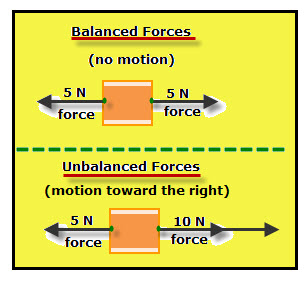Week of February 9

The Big Idea!
Evidence of the dynamic changes of Earth’s surface
through time is found in the geologic record.
I can…
- Describe methods used by scientists to determine
the age of the Earth
- Describe radiometric dating and its role in
absolute age
- Predict age of fossil based on radiometric
dating
- Design a graphic representation of the
evolutionary timeline that includes the main geological and evolutionary events that occurred
- Explain how index fossils are used to determine relative age
Vocabulary:
absolute age
radioactive decay
half-life
radiometric dating
isotope
daughter-atom
neutron
radiation
radioactive
geologic time scale
fossil record
mass extinction
diversity
Absolute Dating of Rock Layers With Index Fossils
- Scientists have estimated the age of the Earth to be approximately 4.6 billion years old. They have determined this by:
- The oldest rocks on the Earth have been found in Canada - they are about 4 billion years old
- Moon rocks and meteorites have been dated at 4.6 billion years old - these bodies would have formed about the same time as the Earth
Radiometric Dating
- Carbon-14 dating is used to date bones, wood, shells, and other organic remains of organisms that lived in the last 45,000 years. The half-life of Carbon-14 is 5,730 years.

- Potassium-Argon Dating - finds the absolute age of igneous rock that are between 100,000 - 4.3 billion years old. (Half-life = 1.25 billion years)
- Uranium-Lead Dating - finds the absolute age of ancient igneous rock that are 100 million - billions of years old. (Half-life = 4.5 billion years)
Question: A sample of volcanic ash was found to have 12.5% of its original radioactive atoms left. If the half-life of the substance is 20,000 years, how old is the ash?
Geologic Time Comparison
Geologic Time Scale
| EON | ERA | PERIOD | EPOCH | MILLIONS
OF YRS
AGO | MAJOR BIOLOGICAL EVENTS |
P
H
A
N
E
R
O
Z
O
I
C | C
E
N
O
Z
O
I
C | Quaternary | Holocene | .01 | Rise of civilization and agriculture. Extinction of large mammals in northern hemisphere. |
| Pleistocene | 1.8 | Modern humans appear. Four major glaciations cause rapid shifts in ecological communities. |
| Tertiary | Neogene | Pliocene | 5 | Extensive radiation of flowering plants and mammals. First hominids appear. |
| Miocene | 23 | Coevolution of insects and flowering plants. Dogs and bears appear. |
| Paleogene | Oligocene | 38 | Worldwide tropical rainforests. Pigs, cats, and rhinos appear. Dominence of snails and bivalves in the oceans. |
| Eocene | 54 | Early mammals abundant. Rodents, primitive whales and grasses appear. |
| Paleocene | 65 | Early placental mammals appear; first primates; modern birds. |
M
E
S
O
Z
O
I
C | Cretaceous | | 146 | Marsupials, ants, bees, butterflies, flowering plants appear. Mass extinction of most large animals and many plants. |
| Jurassic | | 208 | Dinosaurs and gymnosperms dominate the land; feathered dinosaurs and birds appear. Radiation of marine reptiles. |
| Triassic | | 245 | Origin of mammals, dinosaurs and true flies. Less diverse marine fauna. |
P
A
L
E
O
Z
O
I
C | Permian | | 286 | Gymnosperms, amphibians dominant. Beetles, stoneflies appear. Major extinction of 95% of marine species and 50% of all animal families. |
| Carboniferous | Pennsylvanian | 325 | First reptiles, cockroaches and mayflies appear. Extensive coal swamp forests. Sponge reefs. |
| Missippian | 360 | Echinoderms, bryozoans dominant in oceans. Early winged insects. First coal swamp forests. |
| Devonian | | 410 | First amphibians. Extensive radiation of fish, land plants. Many corals, brachiopods and echinoderms. |
| Silurian | | 440 | First spiders, scorpions, centipedes, early insects, vascular plants, jawed fish and large reefs appear. |
| Ordovician | | 505 | First land plants, primitive fungi, sea weed appear. Diverse marine life: corals, molluscs, bivalves, echinoderms, etc. |
| Cambrian | | 543 | Rise of all major animal groups. Metazoan life abundant; trilobites dominant. First fish. No known terrestrial life. |
| PROTEROZOIC EON | 570 | Origin of multicelled organisms. First sponges, colonial algae and soft-bodied invertebrates. |
| ARCHEAN EON | 2,500 | Oxygen levels rise as a result of photosynthetic organisms.
First eukaryotes (single-celled algae): 1.4 billion years old.
Earliest life, anaerobic prokaryotes (bacteria, archaeans) originate 3.5 billion years ago. |
| HADEAN EON | 3,800-4,600 | No life known. Cooling and solidifying of Earth's crust. |
Links:
Radiometric Dating Bill Nye Discoveries Video
Gizmo Half-Life
KT Boundary Discovery Video
Radioactivity
Index Fossils












